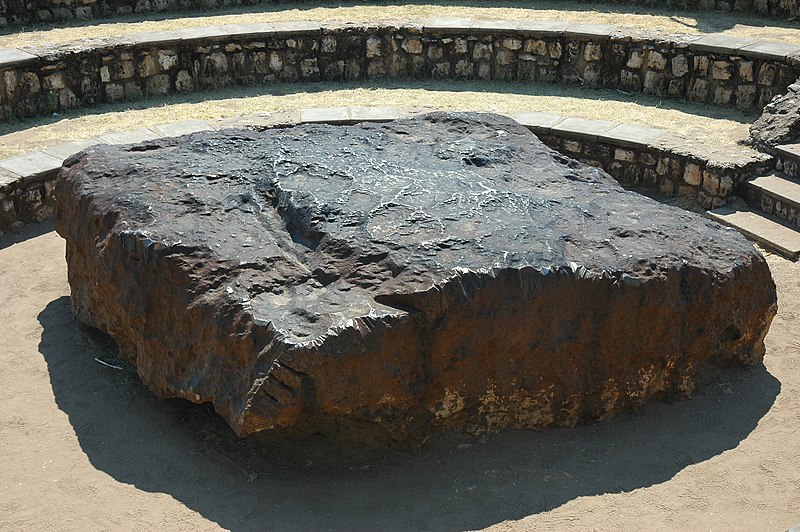Meteorites are solid objects, ranging in size from small rocks to large boulders, that fall to the Earth from space. They are fragments of asteroids, comets, or other celestial bodies that have survived the journey through the Earth’s atmosphere and reached the ground.
Most meteorites originate from the asteroid belt, a region of the solar system between Mars and Jupiter where many small, rocky objects orbit the Sun. When these objects collide, they can break apart, and some of the fragments may be ejected into space. Over time, some of these fragments may intersect with the Earth’s orbit and enter the atmosphere, where they are heated by friction and may become visible as shooting stars or meteors. If they survive the fall to the Earth, they become meteorites.
Meteorites can be classified into several different types based on their composition, including stony meteorites, iron meteorites, and stony-iron meteorites. They can provide important information about the early solar system, as well as insights into the geology and chemistry of other planets and asteroids. Studying meteorites can also help us understand the potential risks and hazards associated with asteroids and other space objects that may pose a threat to the Earth.
What are the nearest Meteorites to Earth?
It is not accurate to talk about the “nearest” meteorites to Earth, as meteorites are objects that fall to the Earth from space, and their origins can be anywhere in the solar system.
That being said, meteorites have been found all over the world, and some areas are known for having a higher concentration of meteorites than others. For example, Antarctica is a popular place for meteorite hunters because the white ice makes it easier to spot dark rocks that have fallen from space. Similarly, some deserts, such as the Sahara and the Atacama, have large areas of flat, barren land where meteorites are more easily visible.
There have also been a few cases where meteorites have been observed falling to the ground, and their location has been quickly identified and studied. For example, in 2013, a meteor exploded over the Russian city of Chelyabinsk, and fragments of the meteorite were collected and studied by scientists.
In general, meteorites are rare objects, and the chances of finding one are relatively low. However, scientists and amateur collectors continue to search for meteorites all over the world, and the study of meteorites remains an important field of research in planetary science.
Should we be concerned about a large meteorite collision?
While the chances of a large meteorite collision with Earth are relatively low, it is a possibility that cannot be completely ruled out. In the past, large meteorite impacts have had significant effects on the Earth’s environment and may have contributed to mass extinctions. However, it is important to keep in mind that these events are rare, with major impacts occurring only once every several million years.
That being said, there are ongoing efforts to detect and track potentially hazardous asteroids and comets that could pose a threat to the Earth. NASA’s Near Earth Object (NEO) program is one such effort, which monitors the orbits of asteroids and comets that come close to the Earth and could potentially collide with it.
If an object were detected that posed a significant threat, there are a number of strategies that could be employed to mitigate or prevent the impact, such as deflecting the object’s trajectory with a spacecraft or breaking it up with a nuclear explosion. However, these strategies would require advanced planning, resources, and coordination.
In summary, while the risk of a large meteorite collision with Earth is low, it is still a possibility that needs to be taken seriously. Ongoing efforts to detect and track potentially hazardous objects are important, and plans for mitigating or preventing impacts should be in place in the event of a significant threat.

